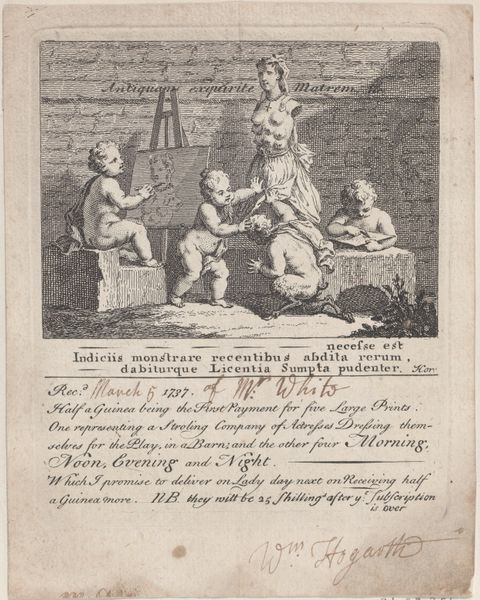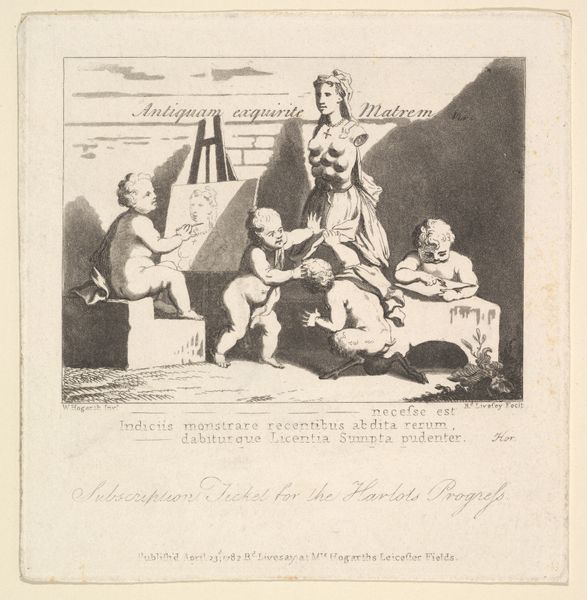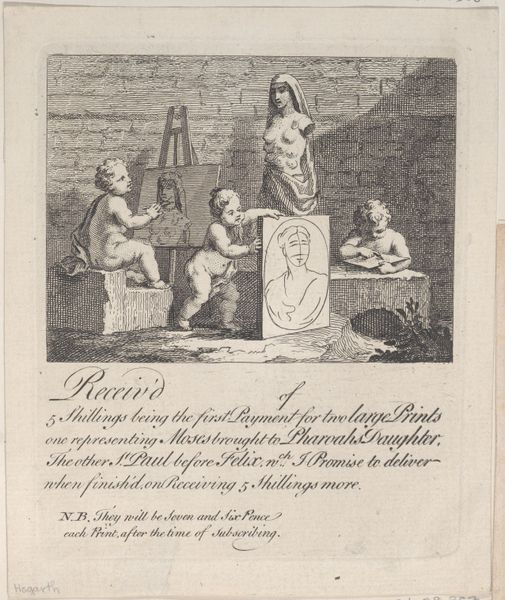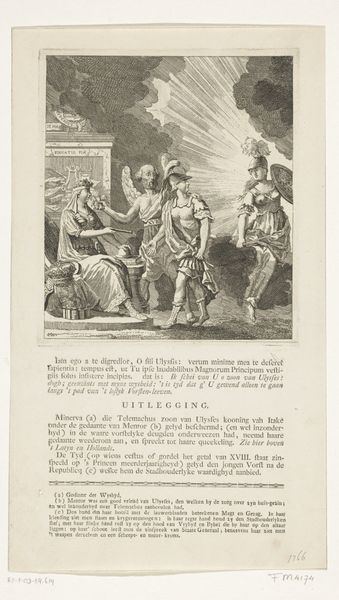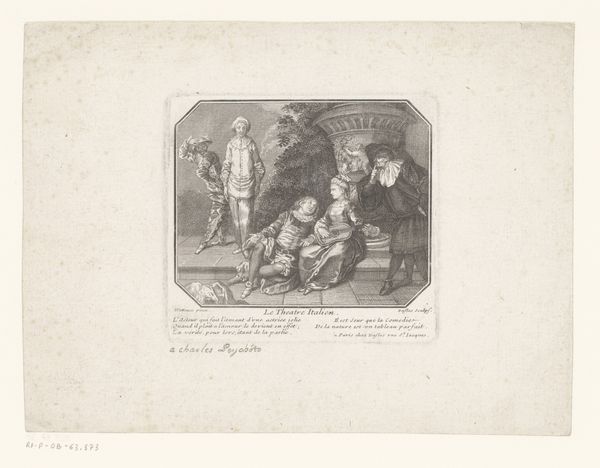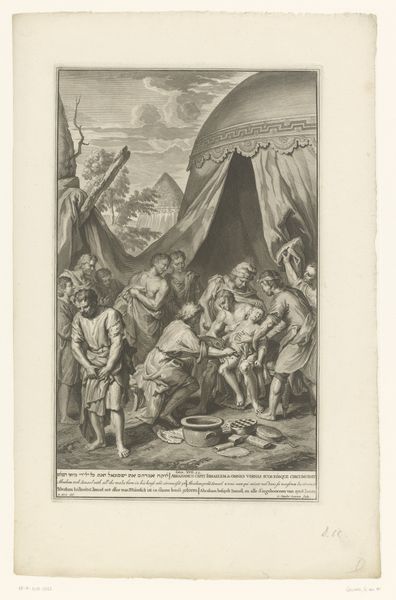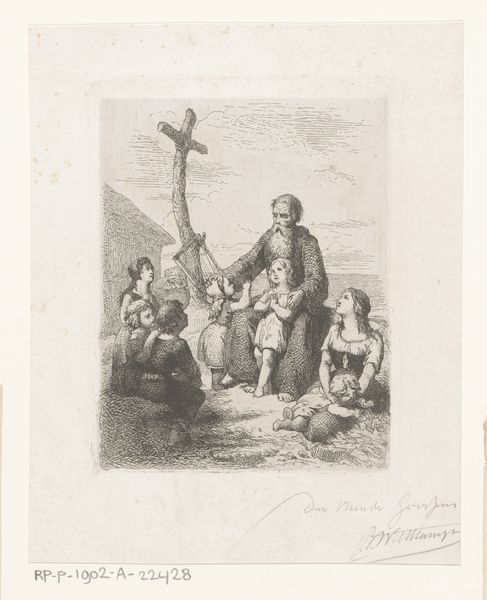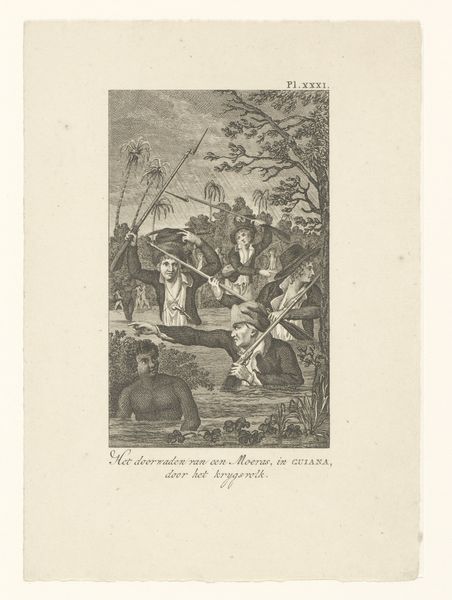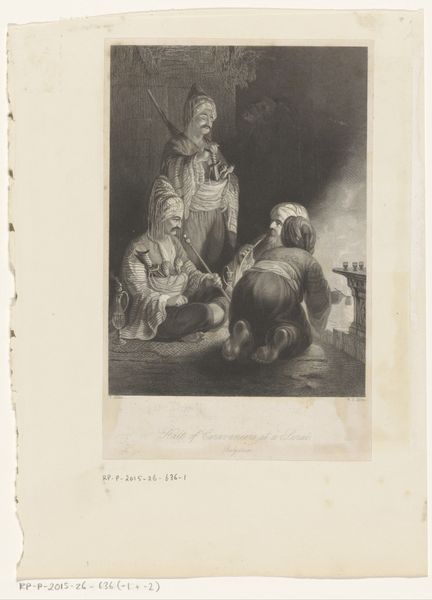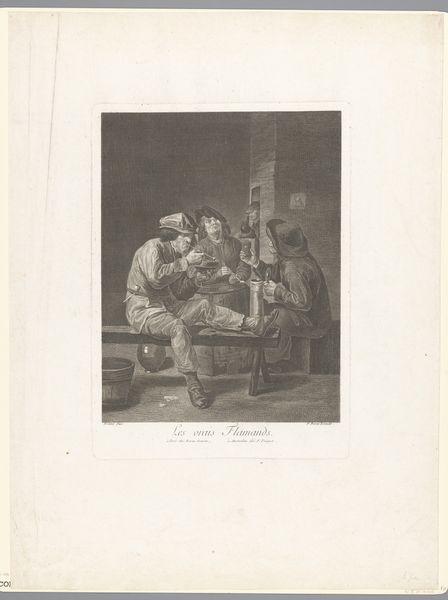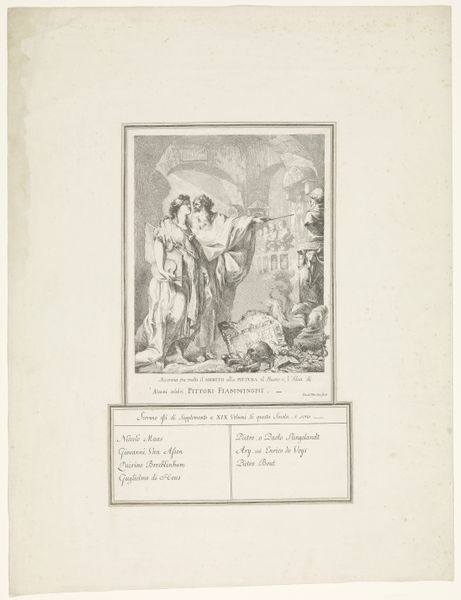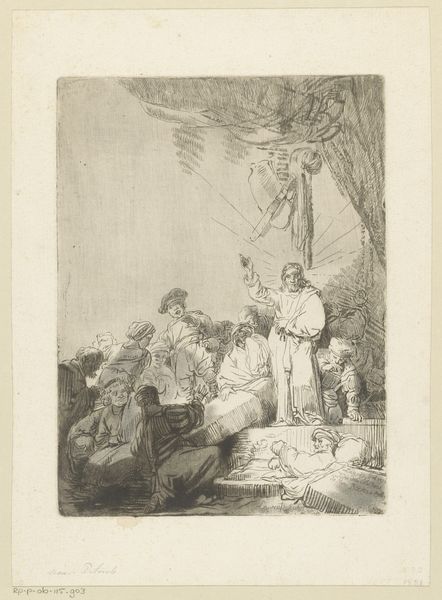
Dimensions: sheet: 5 1/2 x 4 7/8 in. (13.9 x 12.4 cm)
Copyright: Public Domain
Curator: This engraving, "Boys Peeping at Nature," created in 1782 by Richard Livesay, is interesting because it challenges the typical boundaries between what is considered 'high art' and the everyday realities of its production. The fact that it's an etching, a printmaking technique, signals a deliberate attempt at reproducibility, for wider consumption. Editor: It definitely feels different from a unique painting or sculpture. I'm struck by how the etching itself becomes a sort of commodity, like a ticket. How do you see the material impacting the work’s meaning? Curator: Precisely! The print *is* a ticket - "Subscription Ticket for the Harlot's Progress." Livesay is participating in the cultural milieu dominated by Hogarth. This becomes very relevant when we consider its function. Who was it for? What did owning this print signify? Think about the labor involved - the artist, the printer, the distributors - a whole network of production facilitating its circulation. How does that contrast with the classical imagery invoked here? Editor: I see what you mean! The little cherubs drawing and observing the bust, it seems like a comment on artmaking itself. The process of copying, distributing - even buying a ticket – makes art accessible but also maybe cheapens it? Curator: Yes! The image satirizes both artistic practice and consumerism by directly selling it. The inscription on the stone uses Latin verses. "Subscription Ticket for the Harlots Progress" creates a double irony! Can one even imagine that Harlots were targeted, by using such complex vocabulary? Editor: This perspective really shifts how I see it. It's not just a picture; it's a commentary on the entire art world ecosystem of the 18th century! Curator: Exactly! And that is where this work comes alive for me. The materiality directs us to its message!
Comments
No comments
Be the first to comment and join the conversation on the ultimate creative platform.
